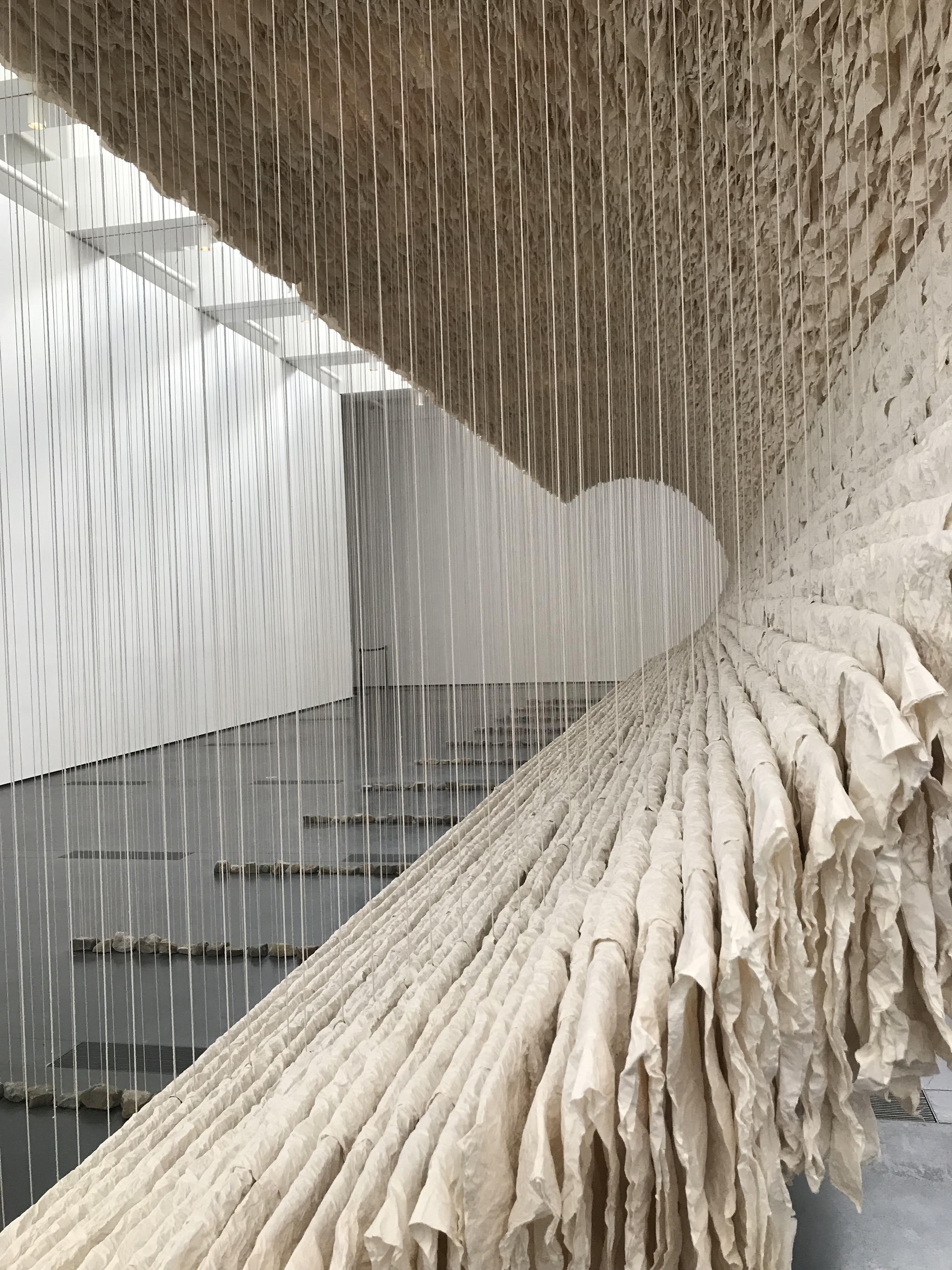
The earliest indications of papermaking date back to the second century BC in China. Traditional Chinese papermaking uses a mixture of mulberry, hemp and various natural plant fibers.
The making of paper is not only a technological feat unto itself but supported the development of ink painting, the written language and detailed record keeping. The work shown here by Zu Jinshi uses 8,000 sheets of crumpled Chinese paper as a sculptural material — a monumental symbol of Chinese history. The piece, entitled Wave of Materials (2007-2019), suspends those paper sheets to form an enormous wave that floats in mid air.
Zhu is perhaps best known for his colorful paintings that employ a heavy application of paint contrasted by much of the canvas that is kept bare. The empty space and its use in a composition is an incredibly potent concept in Asian art. In Western traditions the void or empty space in a composition is often referred to as the negative space. Many see Zhu’s early paintings as a successful merger of Western Abstract Expressionism and Chinese culture.
Born in China in 1954, Zhu moved to Germany in 1986 and began expanding his artistic explorations into performance art, video, sculpture, installations and photographic work.
After this move, Zhu’s work took a dramatic turn. The work shown here is made of simple unadorned materials: bamboo, cotton, stone and paper (desaturated and raw). What makes it so powerful is its haunting use of emptiness. Blank sheets of paper form a massive arc that stretches more than 30 feet in length and 15 feet tall — a three-dimensional void that crests above the bodies of visitors. Frozen in time and space, this work allows the observer to contemplate the moment just before the overwhelming wave collapses on them. A powerful Eastern art statement in a Western museum space.

Great post, I wasn’t familiar with this artist’s work. I have seen many Japanese artists exploring the spatial and material qualities mentioned here, but this is something really fresh and new to me. Thank you for sharing your insights, I really appreciated reading this post
Thanks Eric!